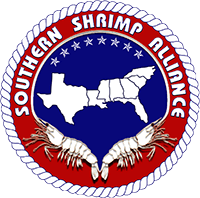Pursuant to the Trafficking Victims Protection Reauthorization Act (“TVPRA”), each year, the Bureau of International Labor Affairs of the U.S. Department of Labor (“ILAB”) researches and identifies goods produced through forced and/or child labor. The biennial lists published by ILAB provide notice to U.S. importers, distributors, retailers, and consumers as to where risks of slave and child labor exist in particular supply chains.
In January, the Southern Shrimp Alliance submitted comments to ILAB requesting that the agency close loopholes that prevented broad categories of seafood from being included in the list. These comments supported the arguments of a wide-range of human rights, labor, and environmental non-governmental organizations seeking more comprehensive coverage of seafood in ILAB’s reporting. The Southern Shrimp Alliance noted that ILAB’s publication did not appear to account for well-documented incidents of forced labor in the distant water fishing fleets of China, Taiwan, and South Korea. Although the agency’s list encompassed many other seafood products harvested and processed within a country’s borders, the omission of seafood harvested from distant water fishing fleets implied that ILAB was not accounting for forced labor in commercial fishing operations in international waters.
Yesterday, ILAB issued its 2020 List of Good Produced by Child Labor or Forced Labor. The list was amended to include fish produced by the distant water fishing fleets of both China and Taiwan. As ILAB notes in its report, “[t]his year’s List is notable as it represents the first time a country has been added to the List for flagging [distant water fishing] fleets using forced labor.” ILAB further explained that the agency would be listing any country that was responsible for flagging fishing vessels in which forced labor was occurring:
“Although these activities may not take place within territorial waters, ILAB made these additions because the List of Goods Produced by Child Labor or Forced Labor applies to all goods produced by forced labor or child labor, including seafood harvested on the high seas. The 2020 edition of the List makes clear that fish caught outside of territorial waters will be listed by the country that has flagged that vessel.”
“The shrimp industry applauds ILAB’s announcement that fish harvested through forced labor onboard Chinese and Taiwanese vessels have been added to the list of goods produced through child or forced labor,” said John Williams, the Executive Director of the Southern Shrimp Alliance. “ILAB’s actions shine a spotlight on the intolerable labor practices of the two largest distant water fishing fleets in the world. It is well past time for seafood importers to forcefully confront the continuing problem of brutal human rights abuses in seafood supply chains around the globe.”
Review the Bureau of International Labor Affairs of the U.S. Department of Labor’s 2020 List of Good Produced by Child Labor or Forced Labor here: https://shrimpalliance.com/wp-content/uploads/2020/10/2020_TVPRA_List_Online_Final.pdf
Read the Southern Shrimp Alliance’s comments to ILAB here: https://shrimpalliance.com/southern-shrimp-alliance-asks-the-department-of-labor-to-close-loopholes-in-the-identification-of-seafood-produced-through-slave-labor/
